
views
X
Trustworthy Source
Centers for Disease Control and Prevention
Main public health institute for the US, run by the Dept. of Health and Human Services
Go to source
Identifying Conjunctivitis

Identify the symptoms. Conjunctivitis can have a variety of different causes, which only a doctor can determine. However, you can identify the symptoms common to all the separate forms of pink eye. Symptoms of conjunctivitis include: Redness or swelling of the eye(s) Blurred vision Eye pain Gritty feeling in the eye(s) Increased tearing Itching of the eye(s) Sensitivity to light.

Seek medical attention if due to chemical exposure. You may experience many symptoms of conjunctivitis if your eyes have been exposed to chemicals. If this is the case, flush your eyes with a sterile eyewash for around fifteen minutes or, if not available, just plain tap water, and then seek immediate medical attention. You can also seek advice from the Poison Control Center at (800) 222-1222.

Figure out if it's allergies. This is a relatively common cause for what appears to be conjunctivitis but is actually allergic keratitis. Patients can experience the above symptoms with an emphasis on bilateral eye itching (itching in both eyes). The symptoms are likely frequent but temporary based on exposure to the allergen. Non-eye symptoms associated with allergies include nasal discharge and sneezing. These symptoms are usually more pronounced during spring or autumn when the pollen count is highest. Exposure to cat or dog dander can also cause or worsen symptoms. If you suspect allergies are the actual cause, try treating them with an over-the-counter antihistamine such as Benadryl, Zyrtec, or Claritin,
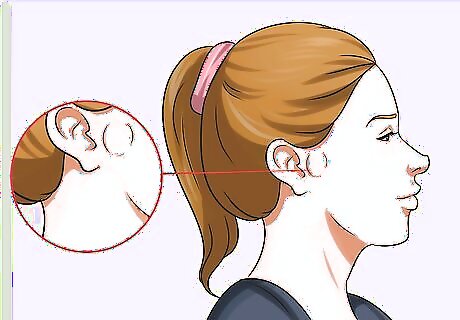
Note additional symptoms of viral conjunctivitis. If your pink eye is caused by a virus, then you may notice symptoms specific to the viral version of the condition. You will have only unilateral eye symptoms (in one eye). You may also experience tenderness in the preauricular lymph node—which is located just in front of the ear—on the same side as the affected eye. This is generally caused by H. influenzae. The conjunctivitis will likely present in addition to a range of other cold and flu symptoms, such as sore throat, congestion, and fatigue.

Note additional symptoms of bacterial conjunctivitis. The additional symptoms of bacterial conjunctivitis ultimately depend upon the type of bacteria causing the infection. The most common are the skin bacteria staphylococcus and streptococcus. However, sexually transmitted bacteria, such as chlamydia and gonorrhea, can also infect the eyes and cause conjunctivitis. Staph and strep causes often stem from improper hand washing, frequent eye rubbing, and/or unsanitary contact lens usage. At the onset, you may notice unilateral eye tearing or crusting followed by a quick jump to bilateral eye symptoms. This is due to the highly contagious nature of the infection quickly spreading to the other eye. For conjunctivitis caused by chlamydia, you may notice the common symptoms, as well as an increased amount of watery tearing and significant eye crusting (to a degree where your eyelids may be stuck together when you wake up in the morning). In addition to the other chlamydial conjunctivitis symptoms, you may also experience green or yellow discharge from the eyes if gonorrhea is responsible for the infection.

See your doctor. Tell your physician the exact symptoms you have experienced due to your conjunctivitis. This will help him or her confirm that the infection you have is indeed conjunctivitis and possibly even the cause. Your doctor will examine your eyes to help make a diagnosis. This may include using a swab to test for bacterial conjunctivitis.
Treating Conjunctivitis

Wait for viral conjunctivitis to clear up. As with many viruses, your body will beat the infection on its own. Most forms of viral conjunctivitis will clear within 7-14 days without any long-term consequences or complications to your eyes. If your doctor determines that a more-serious virus (such as herpes) has caused the symptoms, then he or she will likely recommend an antiviral medication. Do not attempt to use antibiotics for a viral infection as they are only effective against bacteria.
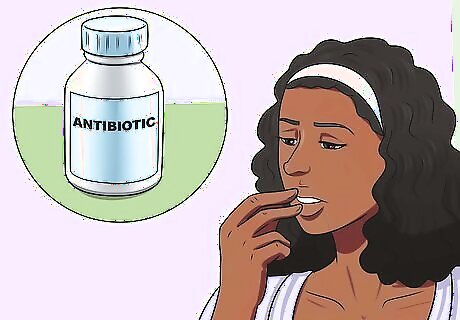
Take a course of antibiotics for bacterial conjunctivitis. For minor cases of bacterial conjunctivitis, your doctor may recommend allowing it to clear up on its own. However, for more-severe bacterial infections, your doctor will definitely prescribe antibiotics. In many cases, the prescription will be for antibiotic eyedrops or ointments to apply to the affected eye(s). Your physician can decide which eyedrops are right for you based on history, sensitivity or resistance to previous antibiotics, and/or allergies. Symptoms generally subside within 3-5 days, but keep your doctor informed of your status. Commonly prescribed antibiotics for conjunctivitis include: Ciprofloxacin 0.3% drops or ointment Ofloxacin 0.3% Levofloxacin 0.5% drops Moxifloxacin 0.5% drops Gatifloxacin 0.5% drops Besifloxacin 0.6% drops Tobramycin 0.3% Gentamicin 0.3% drops Erythromycin 0.5% ointment Bacitracin/Polymixin B ointment Neomycin/Polymixin B/Bacitracin Neomycin/Polymixin B/gramicidin Polymixin B/Trimethoprim

Note any side effects. The eyedrops your doctor prescribes to treat bacterial conjunctivitis may have side effects. Some of the most common include burning; red, itchy, crusty, or irritated eyes; eye pain; or a foreign object sensation in the eye(s). If you experience any side effects more akin to an allergic reaction to the drops, then contact your doctor immediately. These reaction may include: Rash Hives Itching (more broadly spread than just the associated itchy eyes) Tingling Difficulty breathing or swallowing Swelling of the face, throat, tongue, lips, eyes, hands, feet, ankles, or lower legs
Easing Symptoms of Conjunctivitis

Avoid contacts. If you wear contacts, switch to eyeglasses instead until your symptoms go away. The additional contact with the infected eye(s) can increase both your discomfort and your likelihood of spreading the infection.
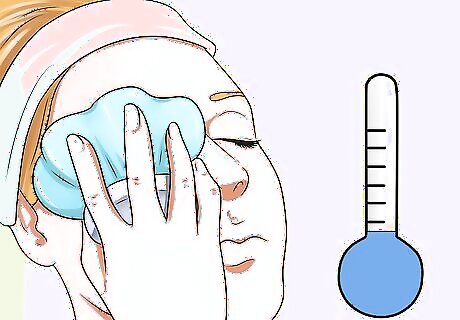
Apply a sterile, cool compress to the eye(s). You can soothe some of the discomfort associated with an infection by applying cool compresses to your closed eyes. Seal some ice in a clean plastic baggie. Wrap with tinfoil to slow the melting of the ice, and then wrap the entire thing with a towel or paper towel to make it more comfortable against your eyelid. Place the compress against your eye for five minutes. Use a different compress on each eye to avoid spreading the infection, and use a new compress each time. Warm compresses are not recommended. Though they may relieve some discomfort, the warmer environment can create an even better breeding ground for bacterial conjunctivitis.
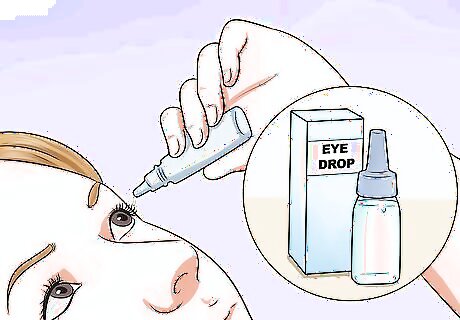
Use over-the-counter eyedrops. Artificial drops can help ease symptoms by reducing the gritty sensation in your eye(s). Speak to your eye care professional about using lubricating drops in conjunction with prescription eye drops. You can also put the artificial tears in the fridge to cool them. when dropped into the eye, this will soothe the eye even more
Avoiding Spreading the Infection
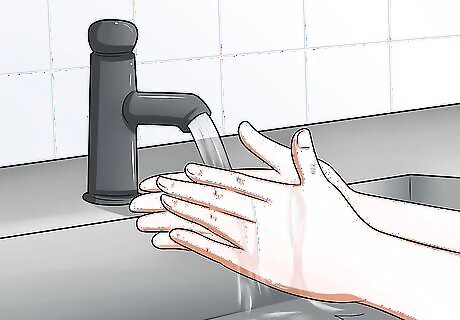
Practice good hygiene. Since bacterial conjunctivitis is highly infectious, ensure that you wash your hands often while you have the condition, especially before and after touching your eyes. Try to be mindful of touching your eyes and avoid doing it as much as possible.

Avoid sharing items. Eye makeup, sunglasses, towels, and any other object that comes into contact with your eyes can carry the bacteria. Avoid sharing these items with anyone, and wash items such as towels often.

Use clean tissues and towels. When wiping drainage from your eye, always use a clean tissue to avoid spreading the infection back into your eye. If you use a tissue to wipe your eye, be sure to properly dispose of it in the trashcan.

Take sick time. Do not go to school or work until your symptoms have cleared up. Antibiotics for bacterial conjunctivitis can also reduce the risk of spreading the infection. Consult with your doctor when he or she writes the prescription how long you should wait before going back to school or work.

Be especially careful around children. Kids with pink eye are going to be much less vigilant about washing their hands and not touching their eyes. If you’re caring for a child with conjunctivitis, take these steps more seriously yourself to compensate to avoid spreading the infection to yourself.
















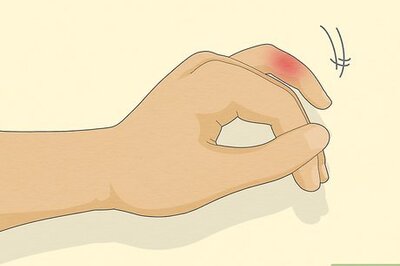



Comments
0 comment